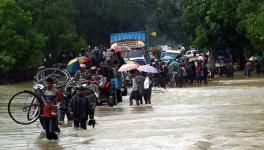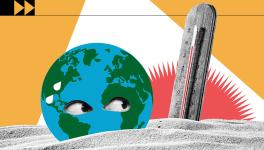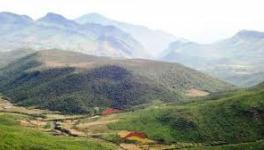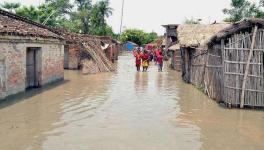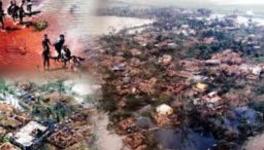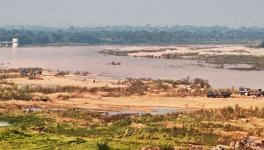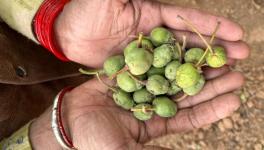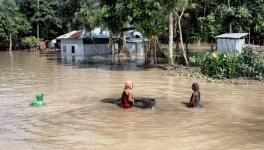‘Unwise for India to Follow Path of Developed Nations’—Prof Vikram Soni
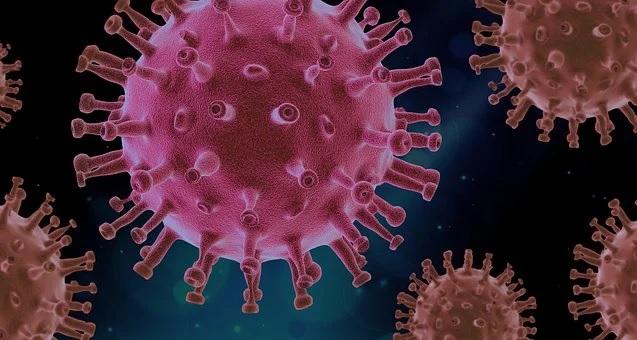
Image Courtesy: Pixabay
Prof. Vikram Soni has worked on the revival and clean-up of India’s water systems for three decades. A well-known environmentalist and professor emeritus at the Jawaharlal Nehru University, Soni is concerned that the Novel Coronavirus, which causes the COVID-19 disease, has entered India’s water systems. Edited excerpts from an interview with Rashme Sehgal.
Can the Novel Coronavirus spread through wastewater?
Once the Novel Coronavirus has found its way into the human population, it is bound to proliferate in wastewater systems. For example, in England, Wales, and Scotland, several wastewater samples were tested, and all carried traces of the virus. In Sydney, remnants of the virus have been detected in raw sewage too.
Research at the University of Stirling indicates that this virus can spread through raw sewage water. Often, in India, raw sewage is discharged into rivers and other water bodies. So, it could become an alarming prospect. The NITI Aayog and WaterAid, in a countrywide report, found that up to 70% of the critical groundwater and surface water resources have contaminants from human activity.
Do we have proof of this yet, and what are the possible repercussions?
There is a great deal of ongoing investigation into the transmission of this virus through sewage and wastewater. The potential role of symptomatic COVID-19 patients in transmitting the disease via the fecal-oral route is under study. It will provide valuable insights and serve as a crucial early-warning tool.
Contaminated river or lake water which carries human waste, sewage, and toxic waste, can be a very generous host for viruses, and we do not know where and how they can mutate and strike. Unlike the developed world, a huge population in India uses raw polluted water from rivers, lakes, or groundwater for drinking purposes. This is [already] a massive source of distress and mortality.
Can you elaborate on this some more?
Several viruses have found their way into untreated water. The most common viruses in water are the so-called garden variety: they cause gastroenteritis, hepatitis, meningitis, fever, rash, and conjunctivitis. Contaminated water also carries Astrovirus and Torovirus, the ubiquitous causes of diarrhoea and gastroenteritis, diseases that normally strike the underprivileged. There is a SARS coronavirus that lives in water and can cause both respiratory and gastro disorders. Then there is Enterovirus A, popularly known as the Coxsackie A virus, and Enterovirus B, which can give you plenty of breathing trouble and also meningitis. There are vast opportunities for a greedy virus.
Are we prepared to deal with these viruses?
Certainly not; because we have not understood the nature of these viruses yet. Appropriate intervention strategies and sanitation practices that ensure a virus-free, clean water supply are a must. Only this can check any further spread of the Novel Coronavirus and other viruses. Scientists have warned that newer viruses will attack us in the future due to climate change.
In this context, why are you critical of the government’s Nal Se Jal scheme, which aims to provide piped water in all towns and villages?
The government has unwisely announced the grand Nal Se Jal scheme at a Rs. 3 lakh crore cost. Since most water sources are contaminated, the only fix is to have RO water, which is both prophylactic [intended to prevent disease] and sterile because it removes all the minerals and nutrients required by the human body. Scaling up a piped-water scheme as a pan-national panacea for RO water is an unhealthy and exorbitantly-priced proposition. [Besides], to neutralise this virus, we would need at least a UV (ultraviolet) treatment, which again costs a lot, though less than the RO—but UV does not remove chemical contaminants.
Why has the government not worked to ensure [that first] there is clean and hygienic water for all?
[It is] from lack of foresight, wisdom, and scientific thinking about the future. Once water gets contaminated, it becomes almost impossible to bring it back to its pristine organic quality. Let me cite the example of Germany. Germany realised the dangers of pollution in the Rhine river. They stopped the inflow of all pollutants and sewage into the river, but fifty years later, its water is still unfit for drinking and can be used only for swimming.
We [in India] are dumping immense quantities of sewage and industrial and domestic pollutants in our rivers. Out of all the water on the planet, only about 2% is fresh water. It has to be kept as pristine as possible. We must not allow it to get polluted at any cost.
The Novel Coronavirus spread quickly all over the world. Why did this happen, and what is the solution?
Uncaring and indiscriminate human activity is most often the reason for environmental degradation and pandemics. It is so with the COVID-19 pandemic too. The Novel Coronavirus is an airborne virus that came from a wild animal source. Large-scale quartering of animals for mass-production of meat produces an artificial environment that can birth mutations in erstwhile dormant viruses. Earlier, animals in the wild were far [from each other] and human habitats. The viruses they harboured thinned out due to the biodiversity and remained isolated.
Present-day human practices make it easy to spawn and transfer viruses to the human population. Human mobility and production on a massive scale have become effective virus carriers. That is how they are spreading. Earlier, locality and biodiversity kept viruses in check. Now, this process has speeded up.
If the planet is degrading due to human activity, what are the immediate steps to resolve this present ecological crisis?
We must realise that we are dependent on living natural resources such as organic water, organic food and soil, and even pure organic air. These are metabolic resources that have coevolved with us--there is no technological substitute for them. We must conserve natural living resources such as forests, rivers, and organic soil. The water that underlies forests is as good as natural spring water. We must safeguard it for our lives and future generations.
We have utterly degraded and destroyed our natural living resource (natural infrastructure) in our zeal for development. We must conserve and use planetary living resources. This essential heritage, once lost, is gone forever—and so are we.
Is this where India is going wrong?
Our government is blinkered and has blundered in unwisely following the development path of the developed nations. We have more and more (unnecessary) consumption, more and more unrecyclable waste that kills our natural living resources on which life depends. This unwisdom has led to many catastrophes, notably climate change and pandemics.
Let us not forget that developed countries have stable landscapes and populations, whereas India has an ever-growing population and consumption. We are running out of natural space and infrastructure at an alarming pace. We are in for a nasty shock if we do not act now—humans will be the first to go under.
Rashme Sehgal is an independent journalist.
Get the latest reports & analysis with people's perspective on Protests, movements & deep analytical videos, discussions of the current affairs in your Telegram app. Subscribe to NewsClick's Telegram channel & get Real-Time updates on stories, as they get published on our website.









